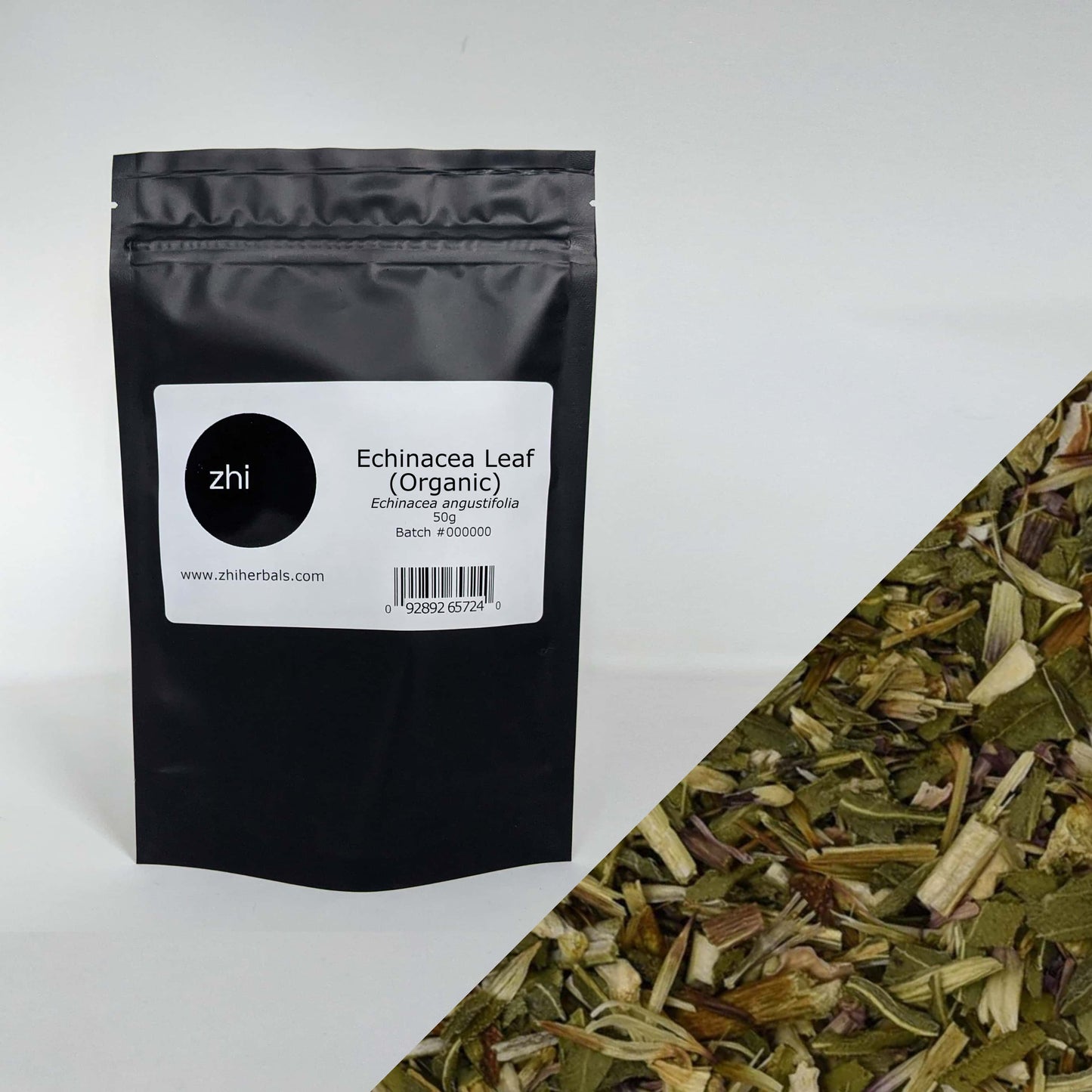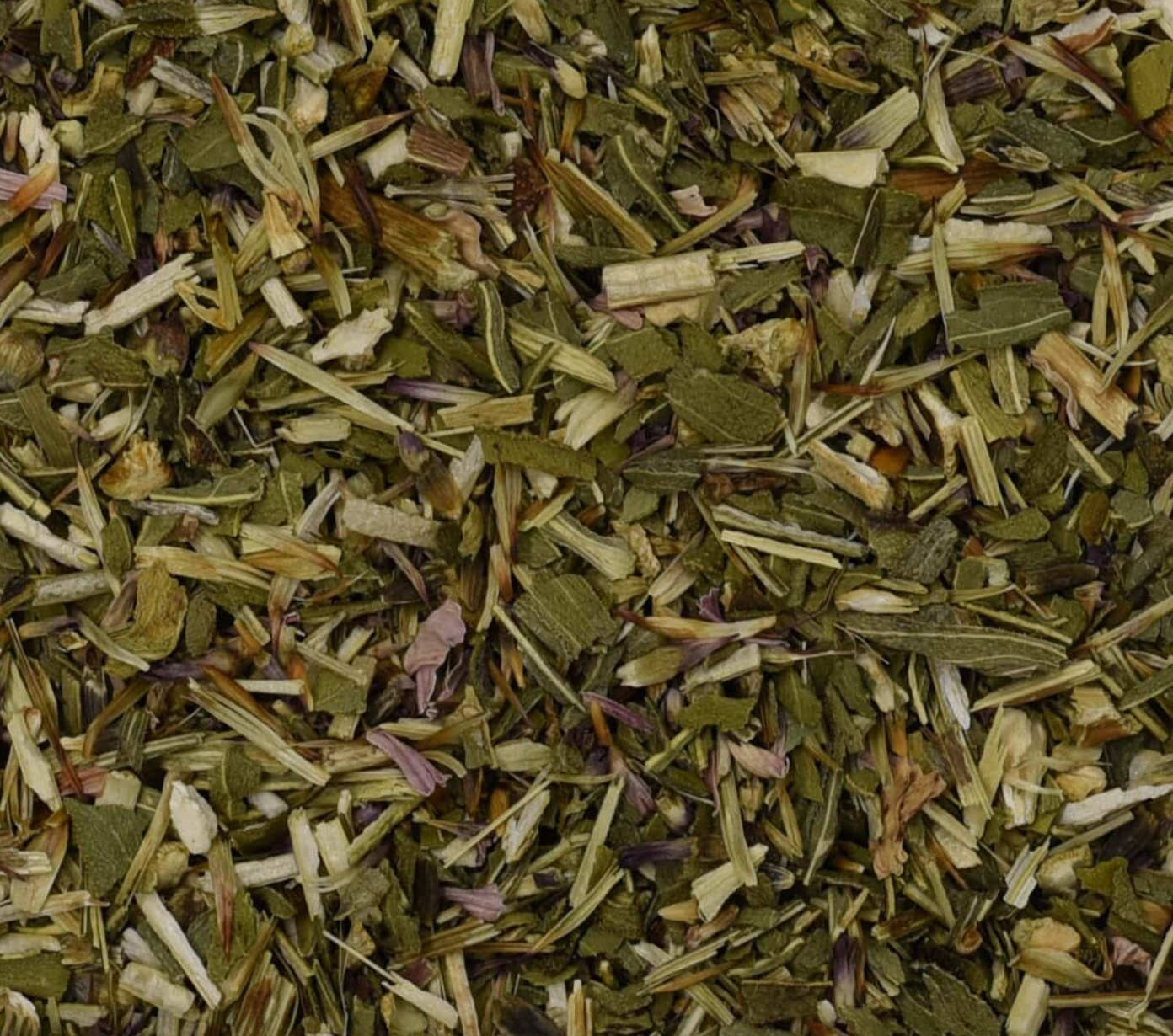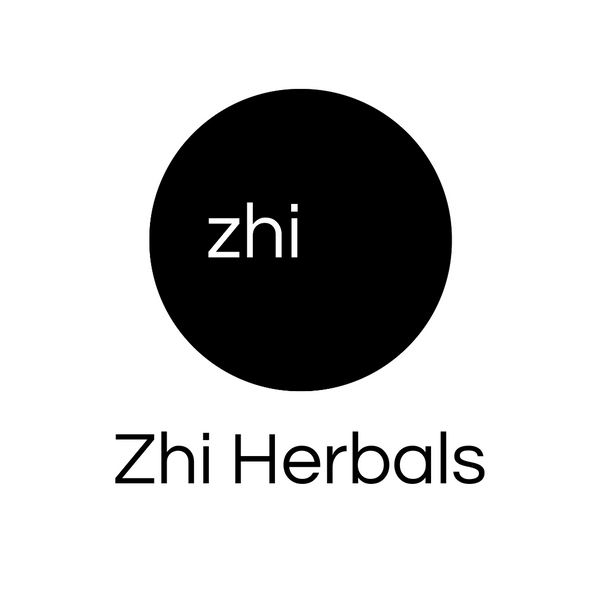Zhi Herbals
Echinacea Leaf (Organic)
Echinacea Leaf (Organic)
Couldn't load pickup availability
Common Name
Echinacea, Coneflower
Latin Name
Echinacea angustifolia
Origin
United States
What Is Echinacea Leaf?
Echinacea is a member of the daisy family and native to North America. Both the root and leaves are commonly used in herbal medicine to treat immune system conditions. Wild echinacea is at risk for overharvesting in many locations, and because of this, we carry only organically grown echinacea.
How to Use Echinacea Leaf (Common Uses)
Echinacea can be taken internally as a tea, decoction, powder, capsules, or extract. Echinacea works well on its own and when combined with other herbs.
Medicinal Uses and Benefits of Echinacea Leaf
Echinacea has a powerful balancing and stimulating effect on the immune system. Its wide variety of active constituents all contribute to its benefits as a medicinal herb. It is commonly combined with other herbs for immune system support, most notably elderberry.
Western herbalists often suggest echinacea taken short term to help prevent cold and flu, as well as to recover from infection and repair damaged tissues. Echinacea may be used to increase macrophage and T-cell activity in the body, and it can help to downregulate inflammatory cytokines.
Echinacea is antibacterial, antiviral, anti-inflammatory, and helpful for clearing mucus from the lungs. In addition, it has some antioxidant benefits.
Often taken at or just prior to the onset of the common cold, echinacea may help to decrease the severity and risk of becoming sick.
If taken during chemotherapy, echinacea may be able to help increase white blood cell count.
Topically, echinacea may be useful for helping to prevent skin damage caused by sun exposure. It could also be beneficial as an herb for wound healing.
Traditionally, Indigenous Peoples have used echinacea for wounds, burns, bug bites, sore throats, toothaches, and joint pain, among other conditions.
Echinacea became popular with eclectic physicians in the late-1800’s, and it was treated as a ‘cure-all’ herb. In this time period, echinacea was recommended for blood conditions, bacterial infections, and sore throats, as well as for other purposes.
Active Constituents in Echinacea Leaf
Glycosides, polysaccharides, inulin, glycoproteins, aminds, volatile oils, polyacetylenes, flavonoids, alkaloids.
Notable Facts About Echinacea Leaf
The name ‘echinacea’ is derived from the Greek word ‘ekhinos’, meaning ‘hedgehog’; a reference to the shape of the spiny central part of the echinacea flower.
Share


Totally satisfied
Fast shipping, great product and packaged nicely!


